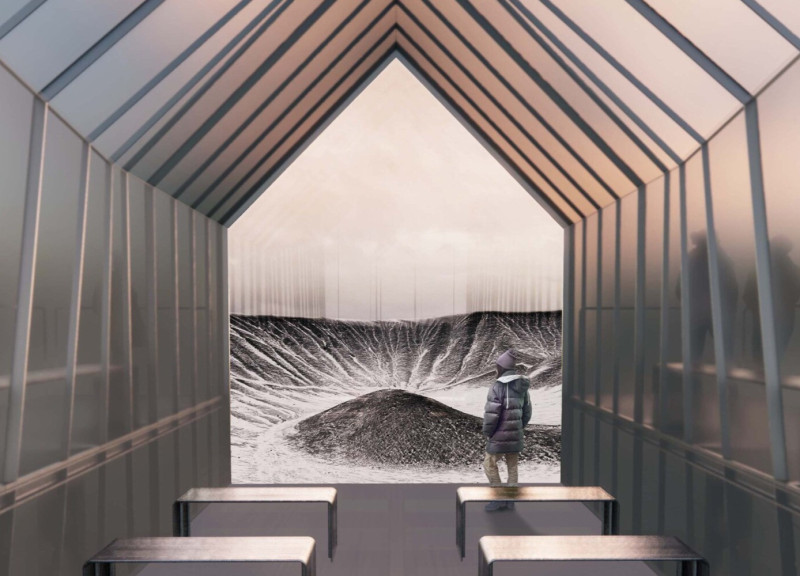5 key facts about this project
Hverfjall Light is located at the Hverfjall volcanic crater in Iceland and aims to enhance the visitor experience in this unique setting. The design responds to the growing number of tourists by creating a space that connects people with the natural environment. It highlights the interplay of light, wind, and sound, while respecting the cultural and historical significance of the region.
Design Concept
The main idea behind Hverfjall Light is to engage visitors through a blend of visual and sensory experiences. By focusing on the stunning views of the crater and the natural surroundings, the design encourages individuals to reflect on their place in the landscape. The shelter's long axis aligns with the sunrise on the summer solstice, drawing on inspiration from Viking longhouses that acknowledge the site's importance.
Architectural Form
A gabled roof characterizes the shelter, providing a familiar form that also protects against the region's unpredictable weather. This shape connects to traditional Icelandic architecture, enabling the structure to fit comfortably into its surroundings. The design includes exterior platforms and benches that offer elevated views, allowing visitors to fully engage with the landscape.
Interior Experience
Inside the structure, the layout directs attention toward the fully glazed north wall, which provides a clear view of the crater’s center. The seating and flooring are arranged to enhance this perspective, inviting visitors to absorb the natural beauty around them. This thoughtful arrangement reflects the designers’ intention to create a space for reflection and connection with the vast landscape.
Materiality
Translucent micro-cell polycarbonate panels are an important feature of Hverfjall Light. These panels allow natural light to enter while diffusing it within the space, creating changing visual effects throughout the day. This material choice contributes to the atmosphere inside the structure, making it responsive to the varied light conditions typical of the Icelandic climate.
The design reflects a balance between the built environment and nature, highlighting how architecture can enhance the experience of beautiful landscapes.



















































